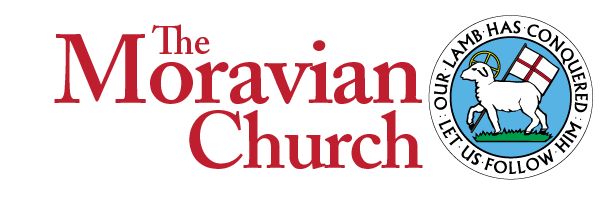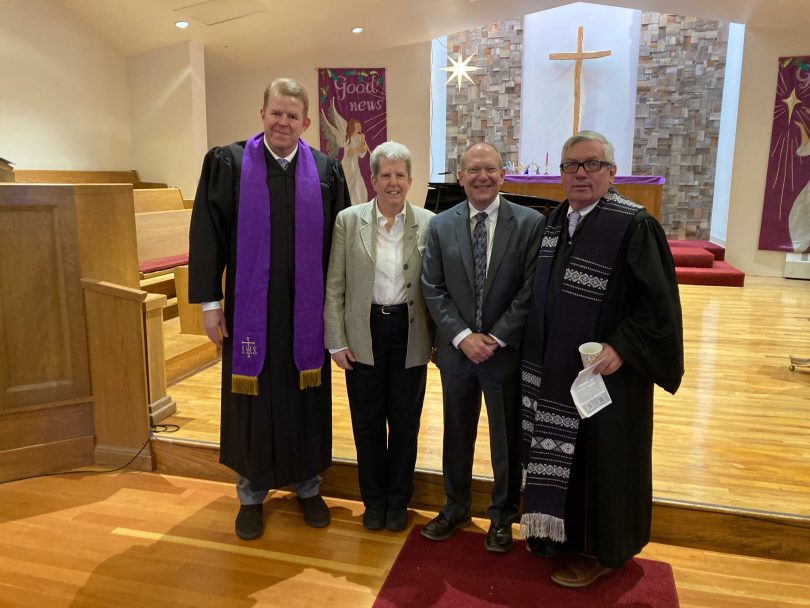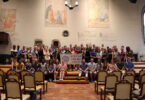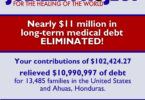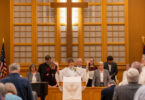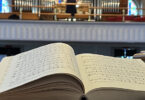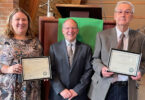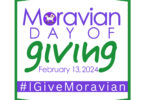While opening one of the dozens of envelopes that were arriving with donations in support of Ukrainian refugees, the Board of World Mission’s the Rt. Rev. Chris Giesler noticed something a little out of the ordinary. A $3,000 check from a church in New Mexico earmarked $2,000 for mission work and $1,000 for “assessments.” While the BWM received donations from many not connected to the Moravian Church, they don’t receive “assessments” from anyone.
In doing a little research, Chris discovered that this church – the United Church of Los Alamos, New Mexico – had been sending the BWM donations regularly for more than 70 years. He reached out to the pastor of the United Church, and began learning more about their history.
The United Church of Los Alamos is a multi-denominational church founded in 1947. The congregation grew out of the “desire of diverse Christians to continue worshiping together after World War II.” Los Alamos hosted personnel from across the U.S. for The Manhattan Project, the project to create an atomic bomb during World War II.
Rather than be aligned with a single denomination, the church, with the help of the Federal Council of Churches (now National Council of Churches), aligned with the Presbyterian Church (PCUSA), United Church of Christ (UCC), Reformed Church in America, American Baptist Church, Christian Church/Disciples of Christ…and the Moravian Church in North America. Chris notes that this church sends regular donations to all of its affiliated denominations.

This display at United Church of Los Alamos illustrates their alignment with the PCUSA, the UCC, American Baptist, Christian Church/Disciples of Christ the Moravian Church and the Reformed Church in America
An affiliation mystery
So how did the Moravian Church become one of the denominations affiliated with the United Church?
“We really don’t know,” says Chris. “At their founding, a Moravian must have somehow been in the mix. It may have been a Moravian stationed in Los Alamos; their founding pastor, who was from Lancaster, Pennsylvania, and served a Methodist congregation Allentown, may have known Moravians in Eastern Pennsylvania. The connection, over time, had been forgotten by our church, but had remained part of United Church’s giving.”
Since re-discovering this connection, Chris struck up a friendship with the Rev. David Elton, senior pastor of United Church. Last summer, Chris visited Los Alamos and presented the congregation with a Moravian Book of Worship, a Moravian Daily Texts and a Moravian star (you can see the star in the photo above). Then, in December, Chris and Northern Province Provincial Elders’ Conference President, the Rev. Dr. Betsy Miller, were invited to visit and worship with the New Mexico congregation.
During their visit, they helped lead worship, met with the congregation, discussed the Moravian Church Northern Province and Board of World Mission and more. They also brought along beeswax candles and taught United Church parishioners how to trim the candles for Christmas. Those trimmed candles were used the next morning, turning their Second Sunday in Advent into a Moravian Candle Service.
Looking a little deeper
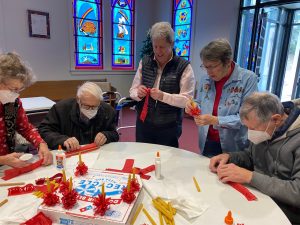
Betsy demonstrates beeswax candle trimming; the candles were used in a Moravian candle services.
Since his visit, Chris has dug a little deeper to help answer the question of how this church in New Mexico came to share a Moravian heritage. He learned that in the 1960s, two members of United Church congregation served in Honduras as agricultural missionaries with the Moravian Board of World Missions. He also found correspondence in the Moravian Archives that reveals Bishop Ed Kortz visited the United Church in 1969 or 1970.
Chris and the Board of World Mission would like to continue to deepen the renewed connection with United Church to increase cooperation, awareness and appreciation for each other. Potential options include inviting them to take part in BWM mission endeavors and to send Moravians to their congregation to participate in their mission efforts, including building homes in Mexico. In addition, the Northern Province may consider finding a way to identify United Church as an affiliate or fellowship with the Moravian Church.
So if you ever find yourself in Los Alamos, New Mexico and are looking for a Moravian connection, be sure to seek out United Church of Los Alamos.
And if you have any recollections or insights into the Los Alamos- Moravian connection—that is, information or research that would reveal how the Moravian Church became a part of the United Church heritage—reach out to Chris! ([email protected]).
